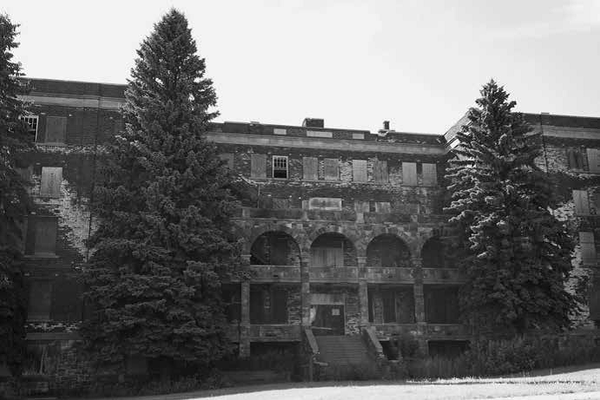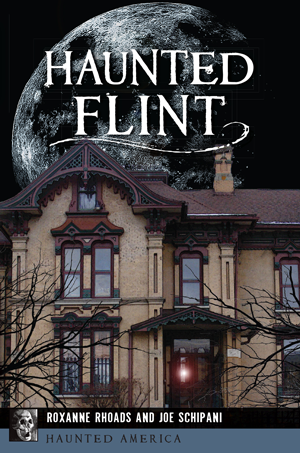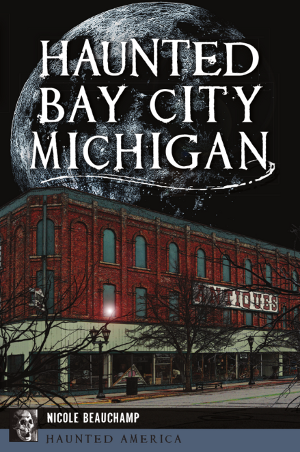
In Marquette, Michigan, stands the old Holy Family Orphanage. Built in the early 1900s, the orphanage quickly built a reputation not as a safe haven as it was intended, but as a dark and dangerous place for children. Here, author Jennifer Billock tells the story of Holy Family, as featured in her book Ghosts of Michigan’s Upper Peninsula.
Looking back, it seems like Holy Family Orphanage in Marquette didn’t have the best of reputations from the start. Frederick Eis, a bishop with the Marquette Catholic Diocese, petitioned for the building’s construction in the early 1900s, when the two other orphanages in the Upper Peninsula had reached capacity. The cost to build it—reaching up toward $120,000—was astronomical for typical expenses when it was erected in 1915. But it soon saw a return on that investment, becoming the region’s biggest orphanage and housing up to two hundred children at once.
That’s where the bad reputation comes in. Originally, Holy Family was meant just to serve white children who either lost their parents or were abandoned by them. That sounds bad enough on its own, but the first residents actually came as overflow from the orphanage in Assinins, which had a sordid past all on its own. Eight nuns arrived in Marquette with control of sixty Native American children, all of whom had been ripped from the arms of their parents in Assinins as babies in the continuing effort to assimilate native culture into white mainstream society. Locals today still tell stories of how their parents were stolen from their native families, placed in the orphanage and then adopted out to white families, never learning of their original heritage or customs until late adulthood.
And then came the allegations of abuse. When the orphanage was fully up and running, stories would leak out of children suffering at the hands of the nuns. It was a tough life, sure, with days filled by church, class and chores. But underneath the workaday existence was something much more sinister. Former children of the orphanage, once grown and moved out, often refused to speak of their time there, save to say that the nuns were cruel and inflicted unsettling punishments on the children. They heard of other children in the orphanage being beaten to death or left out in the cold Michigan winters.
Related: The Ghosts of the Gary Mills
One story that has been passed around but has only been somewhat proven is of a small girl who went out to play during a snowstorm. The weather quickly took a turn for the worse, and the girl became lost. One of the nuns had to rescue her, but by the time she got to her, the girl had developed pneumonia. She died a few days later. The nuns were still angry about her excursion out during winter and decided to make an example of her. They left the body on display in the lobby. Every child was forced to view the girl to be reminded about what could happen to them were they to disobey and go out in bad weather. Former residents confirmed that the death did indeed take place. The nuns held a funeral for the girl in the basement. None, however, would say whether the body was actually put on display.
Other reports tell of a young boy who suffered a mysterious fate. The general consensus is that he either drowned or was beaten to death, and the nuns tried to cover it up. They reported his death as accidental and stored his body in the basement.
Holy Family’s checkered past means it’s a magnet for ghost hunters and fans of the paranormal. Students from the nearby college would often head out there at night to try and experience something–and they usually did. One woman mentioned sneaking in with friends only to see an empty baby carriage mysteriously roll across the floor with no explanation. Others hear the sounds of children crying from the lobby where the little girl was left for everyone to see. And in the basement, where the boy’s body was hidden, many have reported a glowing green orb encompassing a medical-style table. Locals frequently see lights flitting around inside the building after dark with no terrestrial explanation. In response to one paranormal team’s research findings, a local resident claims to have gone with a medium. They were overcome with a freezing blast of air and a deathly smell that made the medium vomit.
The final orphans left the building in 1967, a group of Cuban refugee children fleeing from Fidel Castro’s regime. In the 1980s, the building was completely abandoned, soon falling victim to a bankrupt owner who lived out of state and didn’t want to sell. But as of late 2017, the orphanage has been purchased and remodeled and is now Grandview Apartments, a modernized building with fifty-six apartments and views of Lake Superior from the top floor. No word yet, though, on if the ghosts of the orphanage are enjoying the new digs too.
Want to read more about Michigan’s other haunted places? Check out Ghosts of Michigan’s Upper Peninsula and other similar titles at arcadiapublishing.com!




